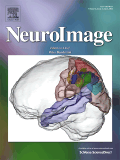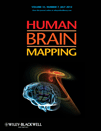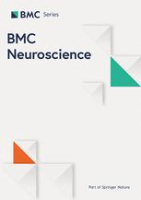
NeuroImage-Clinical
Scope & Guideline
Transforming Clinical Practice through Cutting-edge Research
Introduction
Aims and Scopes
- Neuroimaging Techniques:
The journal focuses on various neuroimaging modalities including MRI, fMRI, PET, and MEG, emphasizing their application in clinical settings to elucidate brain function and structure. - Clinical Correlates of Neuroimaging Findings:
A core area of interest is the relationship between neuroimaging findings and clinical outcomes, encompassing a wide range of disorders such as Alzheimer's disease, Parkinson's disease, multiple sclerosis, and psychiatric conditions. - Translational Research:
NeuroImage-Clinical aims to bridge the gap between basic neuroscience and clinical practice, promoting studies that translate neuroimaging findings into meaningful clinical applications. - Multimodal Imaging Approaches:
The journal encourages the use of multimodal imaging techniques to provide a more comprehensive understanding of brain function and its relationship to behavior and clinical symptoms. - Machine Learning and AI in Neuroimaging:
There is a growing emphasis on the application of machine learning and artificial intelligence techniques to analyze neuroimaging data, enhancing diagnostic accuracy and predictive modeling.
Trending and Emerging
- Integration of Machine Learning and AI:
There is a growing trend towards utilizing machine learning and AI techniques for analyzing neuroimaging data, enhancing predictive modeling and diagnostic capabilities across various neurological and psychiatric disorders. - Focus on Neuroinflammation and Neurodegeneration:
Recent publications increasingly address the role of neuroinflammation and neurodegeneration, particularly in conditions such as Alzheimer's disease and multiple sclerosis, reflecting a heightened interest in these areas. - Longitudinal and Developmental Studies:
Emerging research emphasizes longitudinal studies that track changes in brain structure and function over time, particularly in pediatric and aging populations, to understand the progression of neurological conditions. - Neuroimaging in Diverse Populations:
There is an expanding focus on studying neuroimaging correlates in diverse populations, including minority groups and individuals with varying socioeconomic backgrounds, to better understand health disparities. - Exploration of Brain-Behavior Relationships:
An increasing number of studies are investigating the relationship between neuroimaging findings and behavioral or cognitive outcomes, emphasizing the clinical relevance of neuroimaging in understanding mental health disorders.
Declining or Waning
- Traditional Imaging Techniques:
There is a noticeable decline in studies solely relying on traditional imaging techniques without integration of advanced methodologies such as machine learning or multimodal approaches. - Single-Domain Focus Studies:
Research focusing exclusively on a single neuroimaging modality or clinical condition is becoming less common, indicating a trend towards more integrative and comparative studies. - Basic Neuroscience Research:
The journal has shifted away from purely basic neuroscience studies, favoring research that directly links neuroimaging findings to clinical applications and outcomes.
Similar Journals

AIMS Neuroscience
Unlocking the mysteries of the brain, one study at a time.AIMS Neuroscience is an esteemed open-access journal published by the American Institute of Mathematical Sciences (AIMS), dedicated to advancing the field of neuroscience since its inception in 2014. With a robust ISSN of 2373-8006 and an E-ISSN of 2373-7972, this journal aims to provide a platform for innovative research and scholarly discourse that spans the diverse and dynamic landscape of the neuroscience discipline. As of 2023, it holds a respectable Q3 category ranking in the miscellaneous neuroscience field and ranks #65 out of 113 in general neuroscience according to Scopus, positioning it in the 42nd percentile for impact. AIMS Neuroscience encompasses a broad scope of topics, from neurobiology and cognitive neuroscience to computational models and neuroengineering, making it a vital resource for researchers, professionals, and students alike. The journal's commitment to open access ensures that cutting-edge research is freely available, fostering collaboration and knowledge sharing within the global neuroscience community.

RESTORATIVE NEUROLOGY AND NEUROSCIENCE
Innovative Insights: Shaping the Future of Neurological RecoveryRESTORATIVE NEUROLOGY AND NEUROSCIENCE, published by IOS PRESS, is a premier journal dedicated to advancing the fields of neurology and neuroscience. Since its inception in 1989, this journal has played a crucial role in disseminating cutting-edge research findings and innovative therapeutic approaches that aim to restore neurological function and improve patient outcomes. With a focus on developmental neuroscience and clinical neurology, the journal holds a 2023 Scopus ranking of #129 out of 400 in clinical neurology, and #15 out of 37 in developmental neuroscience, reflecting its significant influence in these domains. Although it operates on a non-open access model, RESTORATIVE NEUROLOGY AND NEUROSCIENCE offers valuable insights for researchers, healthcare professionals, and students seeking to deepen their understanding of neural restoration mechanisms and therapeutic strategies. Located in Amsterdam, Netherlands, the journal continues to foster scholarly dialogue and innovation, contributing to the global advancement of neuroscience and neurology.

NEUROIMAGE
Pioneering Insights into Brain Structure and FunctionNEUROIMAGE, published by Academic Press Inc Elsevier Science, is a leading international journal dedicated to advancing the fields of cognitive neuroscience and neurology. With an impressive impact factor that places it in the Q1 category for both disciplines, NEUROIMAGE stands at the forefront of disseminating high-quality research that employs advanced imaging methods to elucidate the workings of the human brain. As a pivotal platform since its inception in 1992, this journal has continued to thrive, embracing Open Access publishing since 2020 to ensure wider dissemination and accessibility of cutting-edge findings. With a Scopus rank of 7th in cognitive neuroscience and 13th in neurology, and situated in the 94th and 93rd percentiles respectively, NEUROIMAGE serves as an invaluable resource for researchers, professionals, and students alike seeking to explore the intricate relationships between brain structure and function. For more information, please visit their office at 525 B ST, STE 1900, SAN DIEGO, CA 92101-4495.

Brain Connectivity
Fostering Interdisciplinary Insights in Neuroscience.Brain Connectivity is a premier journal dedicated to advancing the understanding of neural connections and brain function through innovative research and interdisciplinary collaboration. Published by MARY ANN LIEBERT, INC, this journal has established itself in the field of neuroscience, earning a respectable Q2 ranking in the 2023 category of Neuroscience (Miscellaneous) and a Scopus rank of 61 out of 113 in General Neuroscience. Since its inception in 2011, Brain Connectivity has been at the forefront of research on the intricate web of brain networks, exploring topics such as functional connectivity, neuroimaging, and the implications of connectivity studies for understanding various neurological disorders. Researchers, professionals, and students benefit from comprehensive access to cutting-edge studies and critical reviews, fostering a deeper appreciation of brain dynamics. As the field evolves, Brain Connectivity remains a vital resource for those aiming to contribute to our growing understanding of brain architecture and function.

HUMAN BRAIN MAPPING
Charting new territories in neurological research.HUMAN BRAIN MAPPING, published by Wiley, is a premier journal in the field of neuroscience, devoted to comprehensively advancing understanding of brain structure and function through innovative mapping techniques. With an impressive impact factor and ranked in the Q1 category across multiple relevant disciplines—including Anatomy, Neurology, and Radiology—this journal is recognized as a vital resource for researchers and professionals passionate about the complexities of the human brain. Founded in 1993 and continuously publishing groundbreaking research, HUMAN BRAIN MAPPING is essential for those looking to stay at the forefront of developments in anatomical and neurological research. Though it does not currently offer Open Access options, the journal remains committed to disseminating high-quality research that influences clinical practices and academic inquiry. Its esteemed position within Scopus highlights its significance; charting at the top percentiles across various medical and health fields serves as a testament to the critical contributions made by the authors and researchers involved. As it converges toward 2024, HUMAN BRAIN MAPPING continues to be the go-to platform for publishing pivotal insights into the intricacies of brain mapping methodologies and applications.

BMC NEUROSCIENCE
Unlocking the Mysteries of the Brain, One Study at a TimeBMC NEUROSCIENCE is a prominent open access journal dedicated to the dissemination of high-quality research within the dynamic and rapidly evolving field of neuroscience. Published by BMC, a well-respected leader in open access publishing, this journal facilitates the free exchange of knowledge since its inception in 2000. With the ISSN 1471-2202, BMC NEUROSCIENCE aims to address the diverse interests of the neuroscience community by covering a broad spectrum of topics, ranging from cellular and molecular neuroscience to general neurological studies, thus appealing to researchers, professionals, and students alike. Although it currently holds a Q4 ranking in Cellular and Molecular Neuroscience and a Q3 rank in miscellaneous Neuroscience categories, its commitment to advancing the understanding of brain function and disorders remains steadfast. The journal features a user-friendly Open Access model, ensuring that critical research findings are readily accessible to everyone, fostering collaboration and innovation in the field. As the journal continues to evolve towards its convergence years of 2024, it aspires to enhance its impact and global reach, making it a valuable resource for anyone interested in advancing neuroscience research.

Brain Structure & Function
Fostering Knowledge in Brain Structure and FunctionBrain Structure & Function is a premier peer-reviewed journal published by Springer Heidelberg, focusing on the intricate relationships between brain anatomy and its functional implications. With a significant presence in the academic community, the journal is recognized for its high impact, evidenced by its rankings in the Q1 categories of Anatomy and Histology and its commendable position in the Neuroscience field. It has successfully maintained a convergence of research and innovation from 2007 to 2024, providing critical insights that drive forward our understanding of the brain. The journal's outstanding metrics, including a ranking of #6 in Anatomy and #18 in Histology within Scopus, highlight its role in shaping modern research. Offering open access options, Brain Structure & Function ensures that its cutting-edge findings and methodologies are accessible to a broad audience of researchers, professionals, and students eager to contribute to the evolution of neuroscience. With its comprehensive scope and commitment to high-quality research, this journal is an essential resource for anyone invested in the complexities of brain structure and their functions.

Cognitive and Behavioral Neurology
Elevating Knowledge in Cognitive and Behavioral NeurologyCognitive and Behavioral Neurology is a prominent peer-reviewed journal dedicated to advancing the understanding of cognitive and behavioral aspects of neurological disorders. Published by Lippincott Williams & Wilkins, this journal has established itself as a vital resource for researchers, clinicians, and students in the fields of cognitive neuroscience, neuropsychology, and psychiatry. With an ISSN of 1543-3633 and an E-ISSN of 1543-3641, it offers a robust platform for the dissemination of high-quality research, as evidenced by its positioning in the Q3 quartiles across various categories, including Cognitive Neuroscience and Psychiatry. The journal, which has been actively publishing since 2003, encourages innovative studies that explore the intersection of cognition and behavior in neurological contexts. As a vital contributor to the academic dialogue on these topics, it provides an essential archive of findings and discussions that inform clinical practice and educational approaches, reflecting its commitment to improving patient outcomes and enhancing neurological science.

Archives of Neuroscience
Championing academic excellence in neuroscience exploration.Archives of Neuroscience is a multidisciplinary journal dedicated to advancing the field of neuroscience through the publication of original research articles, review papers, and case studies. Published by BRIEFLAND, this journal aims to bridge the gap between neuroscience research and clinical applications, fostering a deeper understanding of brain function, neurological disorders, and potential therapeutic approaches. With an ISSN of 2322-3944 and an E-ISSN of 2322-5769, Archives of Neuroscience serves as an essential platform for researchers, professionals, and students alike, encouraging open access to knowledge and insights that drive innovation in the field. Although coverage was discontinued in Scopus from 2016 to 2017, the journal continues to uphold rigorous standards of academic excellence, making it a valuable resource for the neuroscience community seeking to explore and disseminate new findings. The journal is committed to providing timely access to research tools and findings that are crucial for informed decision-making in both academic and clinical settings.

NEURORADIOLOGY
Pioneering Insights in Neuroimaging and Cardiovascular MedicineNEURORADIOLOGY, published by SPRINGER, stands as a pivotal journal within the fields of Cardiology and Cardiovascular Medicine, Neurology (clinical), and Radiology, Nuclear Medicine and Imaging. Since its inception in 1970, this esteemed publication has been dedicated to advancing our understanding of neuroimaging and its applications in clinical practice, thereby promoting interdisciplinary collaboration among specialists. With an impressive impact factor and consistently ranked in the upper tiers (Q1 and Q2) across its relevant categories, NEURORADIOLOGY is particularly recognized for its contribution to the science and application of imaging technologies that enhance diagnosis and treatment in neurology and cardiovascular medicine. Researchers and practitioners looking to stay at the forefront of the field will find crucial insights and innovative research within its pages, making it an essential resource for both students and seasoned professionals alike. NEURORADIOLOGY is accessible via subscription, ensuring a comprehensive repository of high-quality research for its diverse readership.